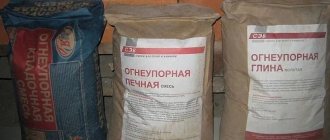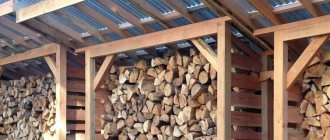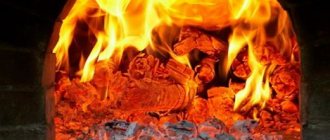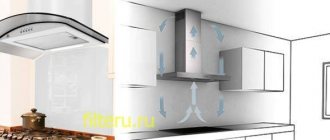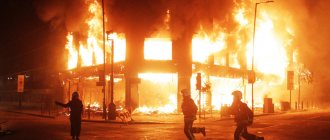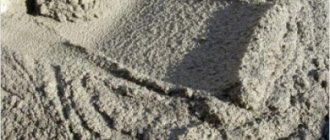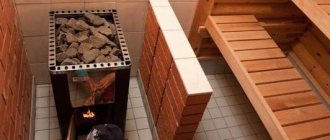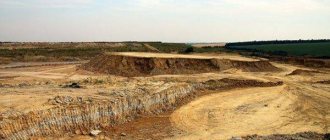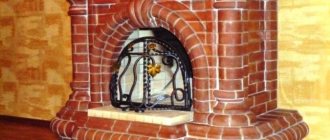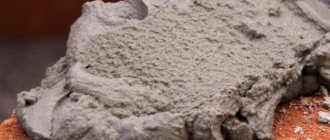- Refractory
- Visual inspection
Not every building material is suitable for the construction of an effective heating device and a safe gas exhaust channel. Therefore, we propose to consider bricks for laying a stove: which ones are better, what shape, color or size they may have, how to choose and distinguish high-quality from bad, what kind of manufacturers produce them. After reading this information, you will know what and in what quantity to buy for arranging the foundation, the lining itself, and how not to overpay.
People continue to prefer high heat storage, practicality that allows you to build different shapes, and the special comfort of a traditional appearance. Long service life and environmental friendliness are a classic solution for years to come.
Basic requirements for bricks for laying stoves
It is important that the finished structure can withstand a number of negative factors for many years. Therefore, the building material used must have the following properties:
- high strength characteristics - so that it does not collapse under mechanical shocks;
- fire resistance - so that it does not deform from an open flame;
- non-susceptibility to temperature fluctuations - so that heat or frost do not have a critical effect;
- the ability to retain accumulated heat for a long time - so that a comfortable microclimate reigns in the room.
Cases in which this will be useful to you
In most cases, the need for heat-resistant bricks arises among owners of private houses or summer cottages. Apartment residents do not need it, since fire safety regulations prohibit you from creating an uncontrolled open fire on the territory of a residential building. Alas, building a barbecue on a balcony or loggia is not the best idea.
This type of stone will serve you well when constructing stoves for heating a house, a chimney used for the same purpose, a permanent installation for a grill, or when planning an English fireplace that will show off on the central wall of your future home. It will create comfort and coziness for you, which will add warm and bright colors to your vacation. In addition to all this, don’t forget that on New Year’s Day you will have somewhere to hang festive socks so that Santa Claus will put sweets in them for your children.
It is not worth saving on material, because the quality directly depends on the price, and since buildings made of fireclay bricks are not cheap, their reconstruction will cost a lot of money.
The solution recipe that I will now tell you can also be used for repair work. It is quite possible that one stone may fall off inside the structure, which needs to be put in place using just such a mixture.
Furnace elements and suitable bricks
Any heating device consists of five conventional parts:
- foundation - takes on the weight of the entire structure, prevents the penetration of cold and moisture from the ground into the steam room and adjacent rooms;
- firebox - the area in which the direct flame burns is exposed to the highest (and sometimes critical) temperatures;
- channels - a sleeve (or their system) designed to remove waste combustion products to the street;
- cladding is a finishing layer that performs a decorative function, ensuring the visual appeal of the structure within the framework of a stylish interior;
- pipe - its outer surface is in direct contact with the external environment, removing combustion products, and therefore experiences the maximum temperature difference.
Now let's see what building material to take for each of these elements.
For the foundation
It’s immediately clear what kind of brick is needed for the base of the stove - durable, but also moisture and frost-resistant. Do not forget that its lower part will lie on the ground (or on a surface adjacent to it), possibly get wet from groundwater and most definitely experience low temperatures during the cold season.
Therefore, the best option in this case is grade I ceramics, which can withstand the weight of even large two-story heating units. In case of small loads on the supporting surface, it is permissible to use piece products of lower quality. Although we recommend that you do not skimp on this issue and spend money, you should ensure a certain margin of safety, especially if the climate in your region is quite harsh and the weather varies significantly depending on the season.
For the firebox
- for the internal part in direct contact with the flame, a fire-resistant fireclay brick is required that can withstand heating up to +1300°C and above without loss of strength properties;
- for the external one (under the cladding) a ceramic one will be sufficient, which can withstand temperatures of +700-900°C without deformation, because part of the heat will be absorbed by the previous layer.
For smoke ducts
The smoke duct is not as hot as the firebox, but still experiences serious thermal effects. Therefore, proceed according to the already familiar scheme: make the first row from refractory, and the second from standard red clay brick, and be sure to line it with a FERRUM stainless steel chimney.
Taking into account all these features, we come to the conclusion that the best brick for a stove pipe is ceramic: it doesn’t mind even sudden climate changes, it doesn’t crack even when it’s -40°C outside, and steam comes out of the hose at +300°C. In regions with particularly harsh winters, it can be reinforced with a second row, already clinker.
For cladding
It all depends on what design idea you want to implement:
- If you are going to tiling, take the usual construction grade II - it is porous and rough to ensure reliable adhesion.
- If you do not plan subsequent finishing, give preference to red clay - its color, combined with neatly executed seams, will be a classically attractive decor.
Modern facing materials imitate various textures and structures - the same wood, marble, metal and so on - their surface can be smooth, matte, glossy, embossed, with refined, precise, complex designs and patterns. They are worth spending money on.
Choosing stove bricks: suitable types, application, rejection
05/01/2016 8726 Pechnik (Moscow)
Content:
1. Worker or stove?
2. What kind of bricks are used in the kiln? 3. Bricks in the kiln 4. Rejection and selection 5. Finishing the kiln 6. To summarize: what to choose from? A brick oven is expensive due to its positive impact on the human condition. During the winter cold or cool off-season, you don’t have to worry about optimal temperature and humidity levels, and the microclimate of your home is characterized as favorable. A high-quality stove can only be built from good material, the main one of which is brick. If you are not careful when choosing a brick, the effect may subsequently be the opposite. A competently selected assortment of bricks for fireplaces directly influences its subsequent cost-effectiveness of use. Most of the heat from a stove built randomly from materials, without placing them in a specific place, will simply evaporate into the atmosphere, and this will happen when the heating device is lit. Thus, when laying stoves and fireplaces, it is impossible to use the same type of material; the bricks must first be disassembled and a thorough inspection must be carried out.
Attention! The cost-effectiveness of brick fireplaces is especially important for the owner, since the performance of the structure depends on the type of material used and the type of construction.
A fireplace is another popular type of heating device, and today it is considered a guarantee of comfort and a symbol of the security of its owner. But this hearth should not be taken only as a stylish piece of furniture; it must be built with all responsibility, because later it will be used as a heating object. First you need to decide on the type of brick for laying out the fuel part; if you do this correctly, the fireplace will be an economical and highly productive device.
Among other things, using a special figured brick, you can get an elegant and impressive object without the use of any expensive finishing. Note that by overpaying for decorative material, you save on expensive finishing. By installing such a fireplace in your home, you can style the room much more effectively than, for example, a bio-fireplace equipped with fire-resistant glass.
Thus, let's take a closer look at such an important material as brick, consider the types and varieties, how the material can be sorted and rejected, as well as which brick is suitable for decorating stoves and fireplaces.
Worker or furnace
Of course, it is easier to purchase stove bricks sold in specialized stores, made from selected raw materials.
However, there may be a problem here. In order to improve the grade of the material, manufacturers use additives (additives), which subsequently do not allow the furnace to “breathe”. In addition, there is the cost of the material. Bricks purchased in stores will cost you much more than kiln bricks. That is why ceramic brick is most often used to lay out hearths. Rejection options can be very different; the main thing is to determine them from photos of samples and by examining the entire batch.
Regarding the discrepancy between the standard size, which is also called a “module”, of heat-resistant and ceramic bricks. Modern refractories are produced in different sizes, and determining their quality is much easier than can be done with ordinary bricks.
What bricks are used in the kiln?
The hearth mass is made, as a rule, from traditional ceramic bricks - working and facing.
The material should have even, smooth spoons and pokes. Based on this, this or that masonry is given a name, that is, depending on which side faces outward. If the spoon is facing outwards, it is a spoon laying; if it is a poke, it is a poked laying. To lay out the stove, bedding is not used, which is considered fragile and is used (but only in rare cases) for lining round stoves. For laying the stove, solid single bricks are used, in which there are no internal voids. All material must correspond to the module, but the modules can be different, so it is not recommended to use one module for the same fireplace; the masonry may turn out to be short-lived and the stove will simply fall apart. It is possible to lay out a firebox from one module, because it still has to be made as a block built into the body of the hearth with thermal expansion joints.
Which brick is better to refuse?
Unfired raw brick, as well as silicate and slip-cast materials cast by a special method, are absolutely not suitable for the construction of stoves and fireplaces. Raw brick has increased hygroscopicity, and a fireplace made from it will become limp even in a dry room. Silicate is considered low heat resistant, which entails rapid thermal conductivity. The cast one does not fit well, since the solution in it does not sinter, but dries out, which can turn the oven into a pile of rubble with frequent mechanical shocks. Hollow bricks are also subject to mechanical destruction.
Red clay brick must be made in a special way, only then can it be used to build a stove. There are two ways to perform the material. The first is plastic molding, and the second is semi-dry pressing.
First way:
Before firing begins, the molding mass should be passed through a profiled die, resulting in a layer of the required shape. After this, the layer is cut into pieces of the required size, adhering to the module.
Second way:
a pre-prepared molding mass, to which a small amount of water is added, is placed in a mold, then pressed, the water is squeezed out, and the material is fired. Firing is carried out for eight to fifteen hours at a temperature of nine hundred to one thousand one hundred and fifty degrees. The second option is considered the most perfect, since the material is of the required size and its surface is smooth.
According to experts, only the highest quality ceramic bricks and only plastic molding are used to lay the hearth mass. Follow this rule, because we are building a stove to last for years, and it can serve not only you, but also your children. And yet, why plastic molding? The answer is simple, water imparts plasticity to the molding mass and participates in the chemical reactions that occur during the initial combustion of the hearth. Pressed bricks have many shapes, so they do not withstand thermal loads well and do not “breathe” well.
Today, some domestic and foreign manufacturers offer an interesting version of brick with pimples (it is shown in the picture). It seems like a good option - the pimples increase the adhesion of the bricks to the mortar and, as a result, the durability of the entire heating device. But! Such a brick can only be obtained by pressing, so later, when using such a stove, a problem may arise with periodic heating of the hearth - the material may simply burst in the center. So, be careful! Choose the material wisely, but if you don’t have enough such knowledge, turn to professionals.
Solutions.
It's no secret that the main stove mortar is clay mortar. A cement-based solution can be used to line the fireplace. It can also be used for laying out the fuel part, but as the basis of heat-resistant concrete. It is also used if aluminous cement of the GC-40 or GC-50 grade is not suitable for external work. As a filler for the firebox, fireclay fillers ZShA, ZShB are used, as well as the fireclay itself.
Fire bricks
Refractory (heat-resistant) bricks are produced by firing under high temperatures or by pressing. When laying out furnaces, fireclay or quartz bricks are most often used. More often, of course, fireclay, since quartz has a small coefficient of thermal expansion. Quartz brick is made on the basis of quartz sand, which allows it to be used in places of contact with metal elements, such as beams and pallets.
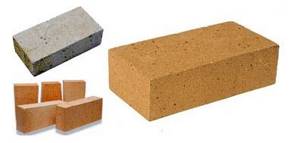
Quartz brick is afraid of pairing with substances that have an alkaline reaction, so it is dangerous to use it in fireplaces.
There is only one single case in which the material can be used, but we will talk about it further. Fireclay brick is considered the best furnace refractory. The method of connecting it to ceramic material represents a fairly popular unit and is five to six millimeters. If the material is properly prepared and laid with high quality, it will serve you faithfully for many years. Fireclay bricks can be of different colors, depending on the type of clay used. The best option is straw-yellow bricks.
Fireclay and quartz bricks are very similar to each other; they can be distinguished by small dark inclusions that are present in the quartz material.
Brick size and shape
The parameters of a traditional working solid red brick are twenty-five by twelve by six and a half centimeters; this is a building module. Provided that you will build a fireplace from this material, the fireclay brick used for the fuel chamber must also be appropriate. Regarding the building module, fireclay bricks are produced under the brand Ш-8.
Before building a hearth, a project is carried out. In this case, the project begins to be done from the firebox. Today's variety of materials, and a huge variety of special shaped bricks are produced by industry, allows this to be done without much difficulty. The parameters correspond to the furnace module, which has been used since ancient times and is twenty-three by twelve and a half by six and a half centimeters. Therefore, these will be the default material sizes for most heating appliances.
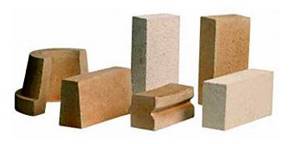
Sh-8 brand brick is also produced in a furnace module, so when purchasing, you should check the dimensions of the material. In addition to everything else, they produce narrowed and narrowed bricks of reduced thickness, the dimensions of which are two hundred thirty by one hundred fourteen by sixty-five millimeters and two hundred thirty by one hundred fourteen by forty millimeters. Using tapered bricks, you can design a firebox made from working bricks. This is not easy to do, but the firebox will give off heat as efficiently as possible later.
Shaped bricks
. Wedge-shaped bricks and wedge bricks require special attention. They can be rib or end. The rib elements are presented in the form of an isosceles trapezoid. The dimensions of the bases of the trapezoid in the brick type mark are written using a fraction: 230x114x65/55 mm. The most popular sizes of rib wedge bricks are the following numbers: 230x125x65/55, 230x125x65/45 and 230x114x65/55 mm.
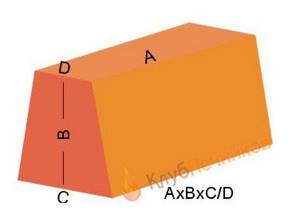
End-type wedges are usually used for laying the locks and heels of semicircular arches, as can be seen in the figure. When constructing fireplaces, such bricks are produced as shaped decorative bricks (in the picture they are shown on the left at the very beginning). Since stove arches are most often shallow, they can be built from ordinary bricks with varying seam widths. But at the same time, the thrust bearings on the horizontal masonry should be cut off.
Box, three-center and semi-elliptical arches are built somewhat differently. To make the heels, ribbed wedge-shaped bricks are used here. If you do not comply with this requirement, the arch may not withstand it and fall apart, which will render the stove unusable. In this case, rib wedges are used (size - 230x125x65/45 millimeters) with undercuts, they are also solid, and 230x125x65/55 millimeters.
Bricks for lining furnaces
. The requirements for it are not as strict as for the material from which the fuel chamber and the hearth array are laid out. Often second grade brick can be used for cladding. Of course, you need to sort bricks not according to external features, but according to technical characteristics.
Just like working bricks, the facing material used for laying hearths must be produced by plastic molding. They can be seen in the picture on the left - the material is smooth and beautiful. On the right, the bricks are pressed or slip; they do not adhere well to the mortar and do not tolerate temperature changes well.
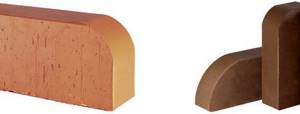
Clinker brick
made from clinker - a mass based on special clay. Clinker is fired at elevated temperatures (from one thousand three hundred to one thousand five hundred degrees Celsius). By and large, it's just a badly burned brick. According to its external characteristics, it represents a dark-colored element, and frozen smudges are noticeable on the spoons.
Clinker bricks can withstand heating up to one thousand two hundred degrees Celsius and are distinguished by their high strength and thermal conductivity. Since solid brick has almost no pores, it has good frost resistance, does not react to aggressive substances and fits well with red ceramic bricks. Due to its high cost, it is rarely used in the construction of hearths.
Brand of brick, what should it be?
The brick marking represents a letter with a number. The numbers indicate the compression force (in kilograms per square centimeter). Typically, a standard kiln uses M150 brick. if the stove is two-story, then the brand is M200 - M250. The highest grade of brick made from natural raw materials is M300, then the question arises, where does the material of grade M350 - M500 come from? It's simple, it's a matter of synthetic additives. However, if such additives are possible during the construction of buildings, then for the construction of fireplaces they must be excluded.
It is worth noting that grades M75 and M100 are not recommended even for the construction of small country stoves. Why? To produce the material, poor raw materials are used, so the brick does not tolerate temperature shocks well.
The marking of bricks is also related to their size. For the construction of a fuel chamber, the cheapest option is most often used, such as Ш5, Ш8, ША5 and ША8. ША8 and ША5 – lightweight lightweight material. When constructing a firebox, this difference does not matter. Typically, Ш22 – Ш45 are used for combustion vaults. in this case, the first numbers indicate the type of wedge: either rib or end.
Brick in the oven
We will look further at how to cull bricks unsuitable for construction and select those suitable for laying.
Well, now we have looked at what constitutes first, second and third grade material. It is worth noting that the division into varieties is absolutely arbitrary; it would be more correct to call them categories. A quality brick is considered to be one that is laid with skill in a place suitable in terms of parameters and characteristics. Let's turn our attention to the stove from a material point of view. In the figure we can observe the foundation (1), firebox (2), smoke circulation (3), cladding (4), chimney (5).
The foundation distributes the total mechanical load of the entire heating device, and therefore must be strong and durable. however, this is not all - the base must be laid out in such a way that no hearth becomes damp over time. Thus, the foundation must have high moisture and vapor resistance. Since our winters are cold, the foundation below can be cooled to sub-zero temperatures, so it must also be frost-resistant. It follows from this that for laying the foundation you need to take only the most selected material. It must be clinker or third grade brick. How? let's list:
- The cheapest brick is considered to be the third grade.
- when building a tall Dutch oven, it is more rational to use first-grade brick, because all grades come out when sorting the same pallets.
- in areas with harsh climates, it is recommended to use clinker bricks, which are able to support any weight.
The temperature mark in the fuel chamber area can reach one hundred thousand degrees Celsius, this is the limit for ceramic bricks, and at one and a half thousand the material begins to melt. Note that in a mechanical load panel, the firebox does not experience great impacts, but must actively receive heat and fully accumulate it, transferring it further to the hearth array. Thus, the fuel chamber is lined with fireclay material, the thermal conductivity of which is better than that of the working one.
Let us separately make a reservation that fireplaces with intense thermal conditions should be made of refractory ceramic bricks.
Smoke tooth
An interesting name for an important element of a stove or fireplace, which is used to eliminate smoke in a heated room. The requirements for a smoke tooth are quite high: it must be durable, tightly connected to the body of the stove, and most importantly, the smoke tooth must reflect heat rays well. This is especially important for a fireplace; the fireplace releases heat into the room by convection, so the inclined surface of the tooth represents a kind of thermal mirror.
Thus, the chimney tooth represents the only place that can be laid with quartz bricks. If earlier it was difficult to do this, since there was nothing to cut the material with, today the brick can simply be cut with a grinder and a diamond wheel.
Smoke circulation does not have close contact with the flame, but this does not mean that the temperature there is low; sometimes the temperature reaches four hundred to eight hundred degrees Celsius. Flue gases usually burn out in smoke ducts, and therefore are characterized as chemically active. Among other things, heat is also accumulated here so that it is enough until the next heating, so this part is made of first-grade brick.
Attention!
Indicators such as thermal conductivity and heat capacity of brick directly depend on the density of the material. The first grade is considered the highest quality brick, therefore it is recommended for the most critical areas of the stove or fireplace.
The significance of such a part of the hearths as cladding is of great importance, although at first glance it seems that the finishing plays a purely decorative role.
Do not mistakenly think that the cladding is used only to ensure that the finish adheres to it. To cite some numbers as an example, the temperature underneath can reach one hundred and twenty to one hundred and forty degrees, and outside – from eighteen to twenty-five degrees. Thus, it would be more expedient to line the stove with second-grade brick; the material has the necessary porosity, which will allow the stove to breathe and fill the scrap with heat. And if you take into account the roughness of the brick, you can guarantee excellent adhesion to any mortar. According to experts, a pipe is considered to be some part of the chimney located above the view. In this place, the temperature can vary from minus forty to plus four hundred degrees, and humidity - from ten to one hundred percent. This area may be subject to precipitation and gusts of wind. But, be that as it may, the pipe must be heated in a variety of climatic conditions; if this requirement is not met, a slow increase in thrust will occur and excessive fuel consumption will occur, as well as sedimentation of solid combustion products. Thus,
- if normal conditions for using the fireplace are expected, first grade brick should be used.
- You can also use old stove bricks, called “mezhigorka” or small bricks, this is considered the best option. Let's make a reservation that old brick should only be laid from the inside of the fireplace, since dark spots can show through the finish.
- in areas with harsh winters, the masonry should consist of two layers. The inner layer is clinker brick and the outer layer is made of first grade hollow brick. Note that this is the only case where hollow brick can be used.
Bricks for sauna stoves
The specifics of the functioning of a sauna stove are known and described in many literary sources. In literary terms, the breathing of the hearth must be precise and sharp, so you need to start digging bricks, guided by the following characteristics:
- Fireclay and quartz bricks cannot be used for laying sauna stoves, since according to the technical specifications their use and storage is unacceptable at a relative air humidity of more than sixty percent.
- The fuel chamber is usually lined with ceramic refractory material.
- the other part of the sauna hearth is made entirely of first-class brick.
- It is recommended to build a small stove from clinker bricks; as a result, the stove will be almost equivalent to a cast iron structure, which means high temperature and rapid heat transfer.
Choosing bricks for a Russian stove
When choosing a material for building a Russian stove, the following features should be taken into account:
- absolutely all orders of Russian stoves are adjusted to the main stove module: twenty-three by twelve and a half by six and a half centimeters.
- the entire hearth is built from first-class ceramic bricks.
- the lower part of the furnace (under) is built from refractory ceramic bricks, this can be a hearth brick or its close analogues.
What does the name "hearth brick" mean?
the hearths of some variants of the hearth are laid out of it, in this case, the Dutch oven and the Russian oven. Among other things, pallets with bricks of this type are installed under the kiln or on a special lower shelf of the rack. Thus, the brick does not overheat during firing, which allows it to be of high quality. In specialized stores, bricks are supplied exclusively separately. Analogs of this material include Gzhel refractory brick, as well as Borovichi material.
Rejection and selection
Bricks rejected for the following characteristics are considered unsuitable for heating structures:
- With dimensions that do not correspond to the module.
- With visible cracks, burrs and burrs from cutting, as well as with foreign inclusions.
- Bricks that are heavily burned are dark in color, bloated, warped, with spots appearing on the edges.
- This group also includes bricks that have traces of gases in their solids. If the solid of the element contains traces of gas emissions, which usually appear during firing, they have the appearance of rounded shells (also called “cavities”) with a single-colored inner surface.
Separately! For fireclay bricks, you can have up to four shells per element, but there should not be more than one per face.
Brick varieties
Ceramic bricks are sorted as follows (see image):
First grade
bricks (on the left in the figure) - a uniformly annealed element with optimal density, number and pore size. The surface of such bricks is smooth, and the color is beautiful and bright, saturated, from pure red to slightly yellowish. When you tap the material, you get a beautiful, even, metallic sound. A fifty-gram hammer is used for tapping. The cuts are without visible burrs, the edges of the brick do not crumble, they are smooth and straight. Often, the presence of iridescent spots can be noted on the edges, or a continuous film is noted.

Second grade
brick (shown in the center) represents slightly unburnt material. Such a characteristic as frost resistance is weak, but the porosity is slightly increased, the heat capacity of the second grade brick is slightly less than that of the first grade elements. The characteristic features of bricks are their large number per ton, almost up to four hundred and twenty pieces versus three hundred twenty to three hundred and forty pieces of second-grade bricks. If you knock on the bricks with a hammer, the sound is clear, but a little dull. When cutting, small nicks and chipping of the ribs are formed. There is no rainbow film; if there is one, it is due to the plasticizers used.
Third grade
brick (image in the figure on the right) - the material is moderately burned. It has a high density, about two hundred and ninety pieces per ton. It is not recommended for foundation construction, as it has low frost resistance and good thermal conductivity. Externally, the color is deep dark to brown. The brick begins to ring when tapped and often has crumbled ribs. On sale it is called “iron ore”.
Rules for rejecting fireclay:
A reliable way to reject fireclay bricks is simple; just drop them from a height of about one meter onto the stone floor. With such a fall, high-quality material splits into large elements, and bad ones into small parts. The method is quite reliable, so it is often used in production, testing several pieces from different batches of material. But not all companies will allow you to hit bricks, so you can use another method:
- We run our fingers across the ribs, there are no crumbs or dust left on the hand, we check further.
- tapping: the sound is even, long-lasting, this is the first grade, which is suitable for laying out fuel chambers, as well as furnaces operating under intense conditions (bell-type furnaces, Kuznetsov furnaces).
- if the sound is clear, short, abrupt, you have a second-grade brick, also suitable for other fireboxes.
- but the dangerous dull sound of a brick - this is a marriage.
Furnace finishing
Provided that the stove plays an independent role and is used in everyday life not only for heating, but also as part of the interior design of the room, then it is more advisable to use plastic-molded facing bricks for its decoration. Almost always this is a second-grade material, which is more suitable than any other for lining a heating device. The finishing of the stove with bricks is carried out during the laying of the unit, thus, it is possible to achieve two goals at once: the stove will subsequently breathe and release the required amount of heat into the room, the fireplace will acquire a beautiful aesthetic appearance, and the necessary neat bandaging of the seams will also be carried out.
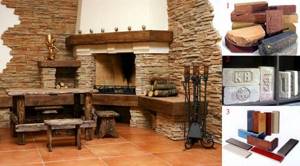
When covering an old fireplace, it is necessary to evaluate the condition of the old seams. If they dry out, the problem should be corrected to prevent the material from peeling off later. Professionals first line the stove with unglazed tiles, and only after that bricks are laid on the mortar. Nowadays it’s much simpler - the mortar for laying the cladding is mixed with aluminous cement.
To summarize: what to choose from?
As a rule, there are practically no offers from manufacturers of bricks of the second or third grade, and they do not sort it, since it is believed that the third grade is suitable for construction.
This results in the presence of different materials in one pallet. When you decide to build a stove, at the initial planning stage, immediately calculate how many bricks will be needed for your hearth. Since more than one pallet will be required for the fireplace, decide with the manufacturer, first selecting the material visually based on pictures and prices, and after that, in the warehouse, inviting a knowledgeable craftsman, buy bricks using the selection and tapping method.
Stock up on material for future use, as situations are different, and a small amount of additional bricks will not hurt.
Video to watch
Types of bricks for stoves by material and manufacturing technology
This material has been popular for many years, so it is not surprising that a wide variety of its variants are now available. But are they all suitable for creating fireboxes, channels, pipes? Let's take a closer look at their features and decide.
Refractory
For our purposes today, two types are relevant.
Quartz - made of sandstone with clay inclusions. Durable, with a glazed surface, it is heat resistant. But it also has disadvantages, including low resistance to chemical environments and oxides, as well as relatively high cost. Therefore, a tooth is usually made from it - a shaped reflector of infrared radiation - but not a chimney. It is not suitable for hoses, as it is quickly destroyed by condensation.
Fireclay - there is more clay in it, it is refractory, and each product is made by firing at +1500°C, so in practical use it is not afraid of temperatures of 1300-1400°C. It is immediately recognizable by its creamy hue and its fine-grained structure - if you try to split it, it will crumble into several large pieces rather than crumble. Its price is cheaper than the previous version, but also impressive, so it is usually used only for individual elements, most often the firebox.
Clinker brick for kiln
It is produced from refractory grades of clay, fired at +1300-1500°C, so that the base material is sintered with material inclusions and forms a glassy mass, which, after hardening, has high frost resistance (from F100) and mechanical strength (from M300).
At the same time, it is quite heavy, does not breathe well, and is relatively expensive, so it is economically and practically impractical to build an entire structure from it. It is used in the following situations:
- creation of the lower rows of the foundation for the installation of a large heating unit;
- construction of the internal part of the chimney channel - taking into account the movement of a large volume of combustion products and the temperature differences operating in it;
- organizing a heating system (and maintaining the desired microclimate) in small rooms, for example, in steam rooms.
Sand-lime brick
It is made from quartz sand, fine and purified, with limestone additives - in a ratio of 90 to 10%. Water is added to the desired viscosity, the resulting composition is molded and pressed under high pressure and high temperature into parallelepipeds of a dense structure.
The ability to add dyes, which allows you to produce these products in any color you like. The rich palette makes it suitable for use in the construction of internal partitions in buildings and for the cladding of houses, but nothing more. This building material does not tolerate temperature changes well, absorbs moisture, and does not adhere reliably to clay mortar, so you cannot make a good pipe or foundation with it.
Hyper-pressed
It is made from screenings of dolomite, marble, shell rock and other limestone rocks, with Portland cement as a binder (10 percent of it, no more). A viscous mass is created, which is then molded and pressed into blocks of the desired geometry, smooth or textured. Finished piece products have good frost resistance (F100-150) and strength (M200-300), but they are too heavy, do not tolerate fracture loads well and quickly crack with a sharp change in the heating-cooling cycle. Therefore, they are used to decorate facades, create decorative fences, and finish those places where thermal influences are excluded.
Characteristics of refractory bricks
There are a lot of fakes of this type of stone on the modern Internet. In this regard, I immediately want to protect you and advise you to purchase it only in specialized stores, construction hypermarkets or other places where you can touch it and evaluate the quality.
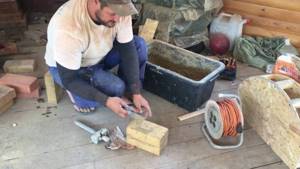
The first thing you need to know is that it must be beige in color. The shade should not be faded or, conversely, saturated, this indicates a marriage or deception. Each brick weighs approximately three kilograms.
The material must not have cavities or any other openings. The ingress of air can lead to a decrease in heat resistance and, therefore, lead to unusability of the product. The dimensions of the standard sample do not exceed 25 centimeters in length, 12 in width and 6.5 in height.
Unfortunately, you won’t be able to check his abilities in the store, so at least ask the seller for information on this issue. If he answers that the fireclay brick they provide for sale has high heat resistance and low thermal conductivity, then you can easily give preference to the type of material under discussion. This is exactly the product you need.
Which brick should not be used for a stove?
The following options will not work:
- Raw - firstly, it is not always strictly the same shape, which will certainly result in flaws and an untidy appearance of the structure. Secondly, it has only undergone atmospheric drying, but not firing, which means that under the influence of high temperatures it will simply crumble into dust.
- Slip casting - it is also often non-standard, which slows down and complicates the construction of a firebox, pipe, channel, but more importantly, it quickly collapses with frequent changes in ambient temperature. This means that its only area of application is decorative.
- Hollow or slotted - it will not be able to stably withstand current loads, even mechanical, not to mention thermal. Literally a few kindlings in a cold winter, and cracks will appear, which over time will develop into destruction.
- Silicate or hyper-pressed - they do not tolerate heat well, and contain calcareous components that evaporate when heated, forming compounds harmful to health with the air.
If all of these types simply cannot be taken, and others are only partially suitable, then which stove brick is best to use for laying a stove? Ceramic is a classic option that has proven its practicality and remains relevant. It is made by plastic molding, squeezing clay through a die and then cutting it into blocks of suitable sizes. It is durable, frost-resistant and, in principle, meets all the above requirements; it can be of the following varieties:
- I (first) – its geometry is as accurate as possible, the color is bright and uniform, marks are free of burrs, the edges are not prone to crumble, and rings metallic when tapped; used in direct construction;
- II (second) - it is a little unburned, with a lighter shade, clearly, but sounds dull; used primarily for cladding;
- III (third) - burnt out, in terms of its operational characteristics does not reach the standard, but meets the requirements for creating a foundation.
And in any case, dimensions are important - when they are unified, it is very convenient.
Peculiarities
Now it’s time to get acquainted with the main features of this material. It is advisable to divide them into positive and negative.
Advantages
- The key advantage of silicate over other materials is its low price. This fact is explained by a simpler production system and cheap raw materials. Its production cycle is no more than 18 hours, while for ceramic bricks it reaches 6 days.
- It has increased sound insulation, which significantly reduces construction costs. Thanks to its ability to absorb noise and vibration, it provides a comfortable indoor environment. As the instructions say, it does not require installation of additional sound insulation.
- It is also impossible not to note the fact that it perfectly resists aggressive environmental influences: mold, bacteria, fungus, etc. This eliminates the need to apply antiseptics.
- The already mentioned wide range of colors can also be added to the asset of this material. It allows you to create unique facade designs, which many designers enjoy using. Moreover, it is painted completely, and not just on the front side.
- Facades made of sand-lime brick do not require additional finishing, which significantly reduces time and financial costs. This material has an absolutely finished look.
- Increased frost resistance makes sand-lime brick a real bestseller for regions with harsh climates (for example, Siberia). He is not afraid of even terrible northern frosts down to -65 degrees.
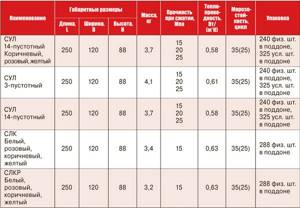
Key characteristics of the main varieties
Flaws
Of course, there was a place for negative aspects, even if there were not so many of them:
- Limited use in the construction of foundations and basements. This limitation is due to the fact that the effect of salts contained in groundwater negatively affects sand-lime brick. It may begin to dry out over time.
- Compared to other analogues, it has lower indicators of such characteristics as fire and water resistance. This significantly reduces its operational period.
- In extreme conditions, this material begins to instantly lose all its qualities. So, for example, in regions with frequent rains, it is not advisable to use it, as it will begin to dry out quite quickly.
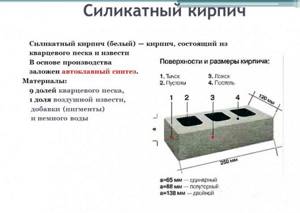
Components of sand-lime brick
This is where the list of qualities can end. Having stated all of the above, we can say that sand-lime brick is an excellent material for various types of outdoor work. In addition, it has an excellent price-quality ratio, thanks to which it has received wide recognition in our country.
Size and shape
A standard ceramic, that is, single red brick for a stove is a parallelepiped 250 by 120 by 65 mm. Previously, manufacturers also produced 230 by 120 by 65 mm, but today this option is already obsolete. When decorating and constructing a firebox, shaped piece products and non-standard ones are relevant.
When constructing shaped elements (arches, vaults, etc.) - wedge-shaped, with a narrower end or edge, and the smaller side in this case is written in the diagrams using a fraction, for example: 230 X 120 X 65/45.
For exterior decoration, arched ones with rounded corners are applicable. But each such original element must be indicated both in the order and in the appendix table with the list of materials used.
Oven screen options
It is recommended to line the sauna stove with half a brick; this is the best option. If the screen is made as thick as a brick, it will take a long time to heat up. In addition, a foundation will have to be built for such masonry. If you resort to a quarter-brick design, the bathhouse room will warm up quickly, but the radiation will be harsh. Regardless of the thickness of the masonry, the distance between the surface of the metal stove and the wall varies in the range of up to 10 cm.
The screens can be a solid structure with ventilation windows, while the chimney is often also made of brick. Another solution is possible: to cover only certain elements of the furnace.
As for decor, there are many different options. The neatly executed masonry itself looks quite beautiful. The color of the red brick contributes to the design of the stove structure. At the owner's request, the bath stove can be faced with porcelain stoneware, decorative brick, natural stone, and tiles. The choice is a matter of taste and the costs planned for these purposes.
How to choose a brick for a stove in a bathhouse
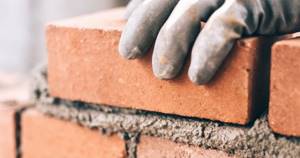
We offer a combined option: lay out the firebox from refractory ceramic, the accompanying cladding is made from simple red, but always first-class.
Keep in mind that quartz or fireclay are not suitable here, since they begin to collapse at a humidity of 60%, and its level in the steam room is usually higher. Clinker with its heat dissipation will be a good option, but relatively expensive, so its use is only advisable when arranging small rooms.
Visual inspection
Before purchasing please make sure that:
- the geometry of each piece is precisely maintained, with deviations of no more than 2 mm;
- when gently tapped with a hammer, a slight ringing sound is heard - this is a characteristic sign of the absence of cracks;
- The color of the cut is uniform, there is no crumbling.
Marking
Any batch made receives an alphanumeric code containing the following useful information:
- Name;
- type – L – front, R – ordinary;
- dimensions;
- margin of safety;
- level of frost resistance;
- average density indicator;
- GOST release.
Size
The following tables will help you understand what brand of brick is needed for laying a stove.
Domestic manufacturers
| Name | Designation | Marking | Dimensions |
| Single | ABOUT | 1-NF | 250x120x65 |
| Modular | M | 1,3-NF | 288x138x65 |
| Euro | E | 0.7NF | 250x85x65 |
| One and a half | U | 1.4NF | 250x120x88 |
| Thickened with voids | ISIS | 1.4NF | 250x120x88 |
| Double (stone) | TO | 1.8NF 2.1NF 2.9NF 3.2NF 3.7NF 4.5NF | 288x138x88 250x120x140 288x138x140 250x180x140 288x288x88 250x250x140 |
| Large format ceramic | QC | 4.9NF 6.0NF 6.8NF 9.3NF 10.7NF 11.2NF 14.3NF | 380x180x140 250x250x188 380x250x140 380x255x188 380x250x219 398x250x219 510x250x219 |
| With horizontal voids | KG | 1.8NF | 250x200x70 |
European manufacturers
| Marking | Dimensions, mm |
| NF | 240x115x71 |
| DF | 240x115x52 |
| 2DF | 240x115x113 |
| W.F. | 210x100x50 |
| WDF | 210x100x65 |
| RF | 210x115x61 |
Form
As an example, let’s take the most common option – ceramic bricks for stoves. It is a regular parallelepiped with sides, each of which has its own name: the largest is the bed, the middle (side) is the spoon, the smallest (end) is the poke.
Color
Depends on the type of piece product. Fired clay attracts with its thick red-brown tint, which is attractive in itself and does not require additional finishing. Fireclay is creamy yellow, not so interesting in appearance, so it is better to cover an element made from it with something more impressive, for example, tiles.
The silicate and hyper-pressed options are ready to amaze with the variety of palettes and even textures, but we have already found out that they are not suitable for structures that experience heating.
The main thing is that the color is uniform, including on the cut or break line. Lighter or darker spots on the edges or in the thickness indicate poor firing quality, and therefore insufficient strength.
Brick heat transfer coefficient general information

Brick heat transfer coefficient
The thermal conductivity of a brick is characterized by its ability to conduct heat energy. Such “talent” is usually displayed in a special indicator. Each species will present its own data in this regard:
- Clinker brick has a thermal conductivity in the range from 0.8 to 0.9 W/m K.
- The thermal conductivity of sand-lime brick depends on the number of voids it contains (for a slotted brick it will be equal to 0.4 W/m K), for those with technical voids the figure rises to 0.66, and for a solid version the data will already be 0.8 W/m TO.
- Ceramic bricks also have different thermal conductivity coefficients (depending on the type presented): the thermal conductivity coefficient of a solid brick gives figures from 0.5 to 0.8, slotted brick has 0.34-0.43, and porous brick has 0.22 W/m K The thermal conductivity of a ceramic brick with pores inside will be approximately 0.57 W/m K (however, even these figures may depend on the pores located in it).
As part of this analysis, it must be noted that the heat transfer coefficient of brick is not yet the highest - aerated concrete, for example, is an even better conductor. In order for the buildings being built to be truly warm, it is necessary to combine many components during construction, the main one of which will be the number of pores.
Manufacturers
When deciding which brick is best to choose for laying a stove in the house, pay attention to the following brands:
- LODE (Latvia) – produces a wide range, a key part of which are brands for fireplaces;
- Wienerberger AG (Austria) is a concern with factories in 30 countries, famous for its heat-resistant Terca series;
- JSC "Keramika" (Belarus) - offers ceramic solutions for cladding, along with an impressive variety of shaped products.
- OJSC BKO and CJSC BKSM are two factories from Russia (Borovichi) offering fire-resistant collections to consumers.
- OJSC Pobeda LSR is another domestic manufacturer (from St. Petersburg) that sells good ceramics at affordable prices.
Features of fireclay bricks
Fireclay brick is one of the strongest types of fireproof building material and can withstand temperatures up to 1000°C. That is why it is used in the construction of stoves and fireplaces.
To make it, the so-called chamotte powder is used, which is mixed in certain proportions with refractory clay, ground to the required consistency. After this, bricks are formed and fired at high temperatures.
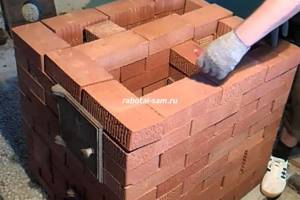
Possible schemes for laying fireclay bricks.
Fireclay brick has a fairly recognizable appearance: it has a grainy structure and a yellowish-sand color.
There are two main standard sizes of refractory bricks: 23x11.3x6.5 cm and 23x113x6.5 cm. This size is due to the fact that these are the proportions that are optimal so that the number of seams is kept to a minimum and the surface of the finished masonry is as even and smooth as possible .
This type of brick is an ideal building material for laying out stoves, fuel chambers and chimneys.
When purchasing this building material, you must remember that high-quality brick will produce a sound similar to metal when tapped. After an impact, a brick made according to all requirements will not crumble, but will split into several pieces.
We line a metal stove with refractory bricks
Before you begin installation work on installing a fireplace or stove in a certain room, you must first prepare the area. Indeed, in addition to installing the metal structure itself, it is necessary to consider many other factors.

To cladding a metal stove, follow the rules:
In order to ensure uniform heating of the room, it is necessary to line the metal stove with refractory bricks. There are enough reasons for this:
- thanks to gradual heating, the brick retains heat for a long time;
- in a sauna steam room, stones or bricks are heated more efficiently, which allows for the optimal amount of moistened steam;
- if the stove is lined with brick, then there is no need to constantly maintain the fire, since the brick retains heat for a long time;
- The brick protects against burns in case of contact with the surface of the stove.
In order to line a metal stove with bricks, it is not at all necessary to be a qualified specialist. It is enough just to have a set of appropriate tools, bricks, mortar. Having familiarized yourself with the sequence of actions, you can safely begin to work.
So, as with any type of bricklaying, you will need:
- level;
- plumb line;
- Master OK;
- wooden hammer;
- metal corners;
- container for mixing the solution.
For cladding a furnace that is planned to be used as a constant source of heating, it is necessary to use only refractory solid bricks. Moreover, the latter can be selected in a variant that will most harmoniously suit the overall interior of the room.
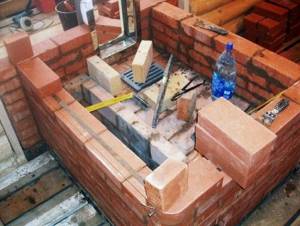
Oven cladding process photo
Before installing the furnace, it is necessary to prepare a concrete foundation that will be able to withstand both the weight of the metal structure and the brickwork. The optimal distance between the stove and the brick wall being built should be 3-5 cm.
Before starting the masonry process, it is recommended to dip each brick in water. Experts say that in this case, the adhesion of the brick surface to the mortar will be much better. Using a trowel, level the mortar layer, and level the brick row with a wooden hammer. Many people advise laying reinforcing mesh on top of each row to strengthen the structure being constructed.
In certain places of the masonry it is necessary to leave some kind of windows, thanks to which air will circulate. Such holes are located at the bottom of the masonry and in the area of the doorway for ease of access when laying firewood.
The walls are laid up to the upper edges of the metal structure. And the upper vault can be decorated with decorative building material. In order for the mortar in the masonry to completely harden, it is necessary to let the erected structure stand for 1 to 3 days. After removing excess mortar from the surface of the walls, the stove is ready for lighting. The video shows the cladding process:
What is the best material to build a stove from?
When it comes to material for building stoves, different options are usually discussed. Among the materials mentioned are metal, natural stone and brick. Each material deserves attention in its own way.
The metal is most often used to make lightweight, portable stoves. But at the same time, it is not always appropriate to install such stoves in residential premises, and the reason here is very banal - the heat from such a stove can only be obtained while combustion is maintained in the firebox. Of course, there are long-burning models, but such stoves are not capable of heating a truly large house.
Natural stone is mainly used to decorate a stove or fireplace. It is completely unsuitable for laying a firebox. Under the influence of high temperature, the stone heats up unevenly, causing it to collapse. In addition, natural stone is a very difficult material for construction - it is very difficult to build even the simplest stove out of stone.
Another thing is brick for laying stoves. The simple rectangular shape allows the construction of stoves of different designs and purposes. The presence of several varieties of this material makes it possible to create stoves with a high efficiency. You can even decorate a building artistically, giving it a special look, using different types of bricks. True, before starting construction, it is worth thoroughly understanding which brick is best to build the stove from.
Fireclay brick properties, dimensions
The best material for laying a stove is fireclay brick. Its characteristics are unmatched among refractory materials:

- withstand t = 1500 C, have a low degree of hygroscopicity, large temperature changes do not affect the integrity of the structure.
Fireclay for masonry is made from fireclay mixed with fireclay powder.
Its quantitative composition is 70%. Manufacturing requires adherence to the smallest details: overburning will make it glassy, and underburning will cause greater moisture absorption. Standard sizes of fireclay bricks:
The color is yellow-beige interspersed with red or brown. The composition is regulated by GOST 390-96.
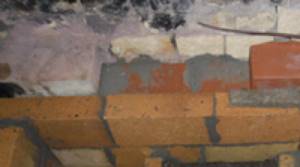
Fireclay brick is designated by the abbreviation ША or ШБ. It is this material that must be used to lay the combustion chamber. In metal furnaces it is used for lining the firebox.
Advantages and disadvantages of buildings built from sand-lime brick
Sand-lime brick and buildings built from it have a number of other advantages. Among them we can highlight:
- Low cost of products;
- Environmental friendliness of the material;
- Good product geometry;
- High aesthetic qualities;
- The indicators of strength, density and frost resistance are quite competitive;
- Soundproofing characteristics;
- Variety of choice of sizes, colors and manufacturers;
- A large number of finishing options, both external and internal;
- Wide range of application of the material;
- You can do the laying yourself; all you need is instructions.
As for thermal conductivity, then, rather, this indicator can be considered a plus, since it is worth taking into account the high density of the products.
The disadvantages are as follows:
- The material is quite heavy, especially in comparison with cellular concrete;
- Moisture absorption;
- The product range lacks decorative elements, which does not allow expanding the architectural possibilities when using the material;
- Limitation of the use of sand-lime brick in the construction of premises characterized by constant humidity. For example, this is a bathhouse.
Characteristics of ceramic bricks
The performance properties of artificial stone depend on the raw materials used and production technology. Red brick can be solid or hollow. Some of its characteristics also depend on the structure of the product.
Density
One of the main characteristics is the density of ceramic bricks, measured in kg/m3. It directly depends on the number of pores in the product and affects strength, thermal conductivity and weight. Solid material has no more than 13% voids, which ensures high strength. It is used in laying load-bearing walls. The hollow block is characterized by the presence of voids, constituting 14-45% of the volume.
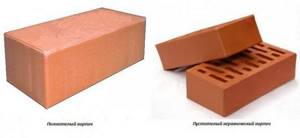
Photo 1. Solid and hollow artificial stone
Thermal conductivity of blocks
The thermal conductivity of a material indicates its energy saving efficiency. This indicator is influenced by the structure of the product; the more voids with air, the less heat loss.
The thermal conductivity coefficient of ceramic hollow brick is 0.34-0.47 W/m*K, solid – 0.6-0.8 W/m*K, facing – 0.35-0.8 W/m*K.
The thermal insulation capabilities of the building material are taken into account when calculating the thickness of external walls. Its ability to transfer heat directly depends on its density. When using solid products in masonry, installation of insulation is subsequently necessary. The construction of walls from hollow products is more effective. The presence of air reduces heat loss, allowing the width of the masonry and/or the thickness of the thermal insulation layer to be reduced.

Photo. The use of hollow blocks reduces the thermal conductivity of walls
Frost resistance
The durability of a structure depends on the ability of artificial stone to withstand alternate freezing and thawing without destruction. The indicator is designated by the letter F. The minimum limit is 15 cycles, the optimal value is 35-50 cycles for internal structures and 50-100 cycles for external ones.
Attention! All building materials are tested under extreme conditions. With a stated F50 value, artificial stone usually withstands a greater number of cycles
How to prepare masonry mortar

The following mortar preparation technologies have proven themselves:
- Clay. A pottery mixture is used, which acquires strength and tightness after the initial combustion of the hearth.
- Clay-fireclay. The composition is mixed from a mixture of fireclay clay and river sand in a ratio of 1:3. It is durable and heat resistant.
- Lime. A slaked substance is used, to which glue for porcelain stoneware is added for strength.
- Lime-cement. Stone dust complements the viscosity of the clay, and the addition of sand allows you to adjust the plasticity of the solution used.
Each material has its pros and cons, the properties are checked during operation.
Characteristics of the main types of building materials
To characterize all building materials there is its own classification, which is quite extensive:
- First of all, any building material is divided into artificial and natural.
- Further division occurs into organic and inorganic matter.
- Next, any building material is divided into its implementation method (polymer, complex, natural).
- The very last point in the classification of a material is its type (stone, sand, cement).
Of course, between these types of classifications there is an intermediate hierarchy, which is impossible to describe for the general type of building materials.
What is facing brick
Facing (facing) brick is a specialized type of external construction and finishing material developed for the external cladding of buildings and structures. It is not suitable for construction - it is too expensive, its properties are designed for certain operating conditions.
But as a finishing material, facing brick has no equal. In addition to high strength, wear resistance, and resistance to adverse effects, facade bricks have attractive decorative qualities. There are varieties with a smooth or embossed working surface, painted or natural color.
Advantages:
- The thickness of the material allows you not to worry about possible mechanical effects on the wall structure and insulation.
- The durability of facing bricks amounts to tens or hundreds of years and can exceed the service life of the house itself.
- Frost resistance is 150 or more cycles (the indicators differ for different types, the statement is true for ceramic or clinker types).
- Hollow brick has good heat-saving properties.
- High moisture resistance.
- Fire safety. The cladding does not support combustion at all and does not suffer from the effects of fire, only from the appearance of soot.
- Does not require maintenance.
- Environmentally friendly material that does not emit any substances.
However, there are some disadvantages:
- The cost of material and labor is quite high and significant investments are required.
- Laying facing bricks is a responsible operation that requires experience and appropriate skills. Carrying out work independently is not possible for everyone.
- The weight of the facing brick is quite high and creates a significant load on the foundation, which may be too weak for additional elements.
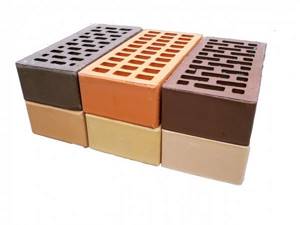
A little personal experience
Friends, I have repeatedly worked with the construction of elements that were later used for heating with wood. Based on my experience, the biggest mistake that owners make is saving money. I was glad that they did not decide to save money on professionals, but I was very disappointed in the quality of the materials they purchased.
All work related to the construction of heat-resistant elements can be done with your own hands.
It’s better to save your money and don’t overpay to expensive builders, but you can’t skimp on fireclay bricks and fireclay. No matter how cool the master is, he will not be able to make candy from underground raw materials. You can blame him later, but I am sure that you will be warned about this outcome of events.
Friends, remember my advice and save your savings by saving on the right things, and not on those that you vitally need! Warmth, comfort and speedy completion of the renovation!
In the process of laying a stove, fireplace or barbecue oven with your own hands, you will definitely need refractory bricks.
It can withstand high temperatures perfectly, so it is necessary for lining the walls of the fuel chamber of the furnace. It is produced from chamotte powder and very high-quality kaolin (fireproof clay). The material has many advantages: resistance to frost, acids and alkalis.
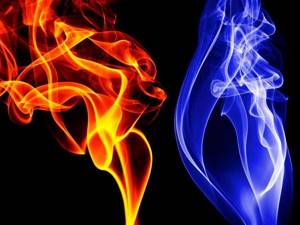
When heated to 1600 degrees, it does not lose its strength characteristics. It has a rough surface, the structure in the form of grains is easily palpable. The weight of fireclay bricks is about 3 kg.
When working with structures that will be operated at high temperatures, do-it-yourself masonry should be done with fireclay bricks. There are 2 known standards for the dimensions of such a stone: 230×114×65 and 230×113×65 mm.
These dimensions were not taken out of thin air. They are made this way so that working with it with your own hands is easier and the thickness of the seams is minimal, and their number is also reduced. The masonry should be as smooth as possible.

Dividing fire bricks into pieces or cutting off corners is a labor-intensive process. It is better to do this with a grinder with a diamond-coated disc installed.
Fireclay bricks do not need to be soaked in water, like ceramic bricks, before laying. But you need to remove any crumbs, soil, etc. from it with a brush. The mason's work must be carried out in such a way that the seam between the fireclay bricks should not be more than 3 mm.
Laying a stove from old bricks

stove made of quality brick
A novice builder very often asks the question: what kind of brick should he use to build a stove? Is it possible to use the brick from which the chimney was laid? Is it possible to use bricks that have been previously used? The answer is yes, you can. But, before you start using them in construction, you need to make sure that there are no chips or other external damage on them, and you also need to thoroughly clean them of dirt and other various impurities and mixtures. Since, for example, the remains of old soot can later manifest themselves in the form of rusty, dirty and oily stains. That is why it is best to lay such bricks with the side being used inside the masonry.
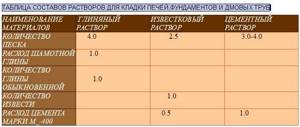
oven mortar characteristics
A high-quality stove is not only the right stove brick, but also the choice of good clay. It is divided into fatty, medium and skinny. If the clay is oily, the ratio of sand is one to ten or one to eight; in medium clay the ratio is one to eight or one to three; in lean clay there is more sand than one to three.
There is one fairly effective method for determining the quality of clay. First you need to make an oblong sausage out of clay as thick as your index finger and let it dry. If after drying the clay does not crack or break, then you have obtained fatty clay.
I would like to emphasize once again that a stove in your home is not only warmth and home comfort, but also increased fire safety
That is why during its construction, it is very important not only to follow construction technologies without deviating, but also to use exclusively high-quality materials in the structure
A stove made of building bricks should gradually warm up your home; it should retain heat for twenty-four hours. A few more tips for determining the quality of clay for the stove’s masonry mortar in the video below:
Conclusion
As has already become clear, laying a brick stove is not particularly tricky. The main thing is to choose the right brick and check whether it is of proper quality before purchasing.
- Thermal conductivity of red brick;
- We make a brick tandoor with our own hands;
- What is brick siding
- Calculation of the amount of bricks for wall cladding
Strength grades
The safety of a building depends on the reliability of its walls and foundation. Density determines not only the weight of red ceramic bricks, but also its strength characteristics. The tensile strength of the material is designated by the letter “M”. It shows the maximum permissible load per square meter. cm surface of the product.
There are eight strength grades - from M75 to M300. The most optimal options for low-rise construction in terms of price and reliability are the M100 and M125 brands. They have standard dimensions of 250x120x65 mm, and the weight of ceramic bricks is 2.5-3.6 kg. Permissible deviations from dimensions are no more than 3-4 mm.

Photo 3. The strength grade often determines the purpose of the material
The thermal conductivity of products depends on the structure, which can be solid or hollow. Various void shapes are allowed: oval, rectangular, round. The material is environmentally friendly; only clay and plasticizers are used for its production.
Attention! Products of the M100 and M125 brands, with low frost resistance, do not have the ability to withstand climatic influences for a long time; they need to be finished with plaster or cladding. The technical characteristics of ceramic brick M100 are somewhat inferior to those of the M125 brand
Its strength is 25% lower. Such bricks are recommended for private and low-rise construction as load-bearing and self-supporting walls, and in high-rise construction - as self-supporting or partitions. The thermal insulation properties of materials and resistance to frost within the same manufacturer are the same (Table 1):
The technical characteristics of ceramic brick M100 are somewhat inferior to those of the M125 brand. Its strength is 25% lower. Such bricks are recommended for private and low-rise construction as load-bearing and self-supporting walls, and in high-rise construction - as self-supporting or partitions. The thermal insulation properties of materials and resistance to frost within the same manufacturer are the same (Table 1):
Table 1. Technical and operational characteristics of hollow red brick M100-M150
| Parameter | Ceramic brick | ||
| M100 | M125 | M150 | |
| Compressive strength, kgf/cm2 | not less than 100 | not less than 125 | not less than 150 |
| Bending strength, kgf/cm2 | at least 15 | at least 17 | at least 19 |
| Water absorption,% | 8-13 | ||
| Frost resistance, cycles | 35-100 | ||
| Average density, kg/m3 | 970-1100 | ||
| Thermal conductivity, W/m*K | 0,36-0,4 |
The characteristics of M125 ceramic brick provide a wider scope of its application. It is used in the construction of residential buildings, industrial facilities, garages, fences and outbuildings. The rough surface promotes high-quality adhesion to the masonry mortar.
The facing material is distinguished by its clear geometry, uniform color (except for special colors) and the absence of external defects. Typically, a thickened facing ceramic brick 250x120x88 mm hollow (photo 4) has a weight of 2.7-3.2 kg, single - 2.2-2.7 kg. This reduces the load on the foundation and provides additional thermal insulation.

Photo 4. One-and-a-half hollow front element
